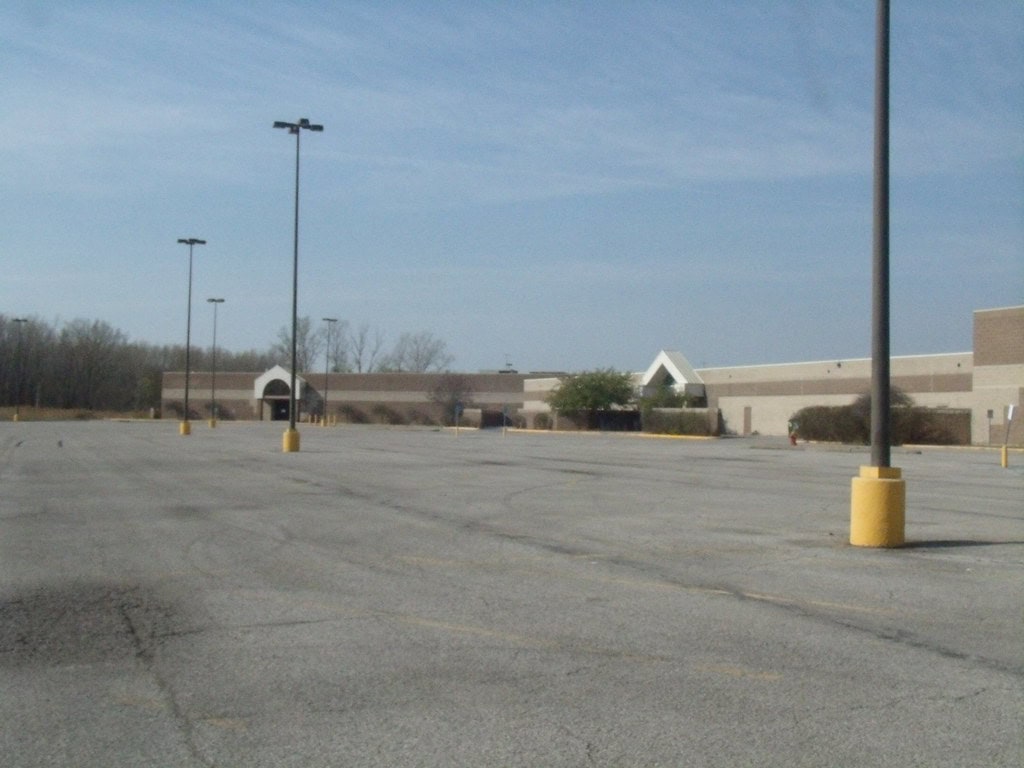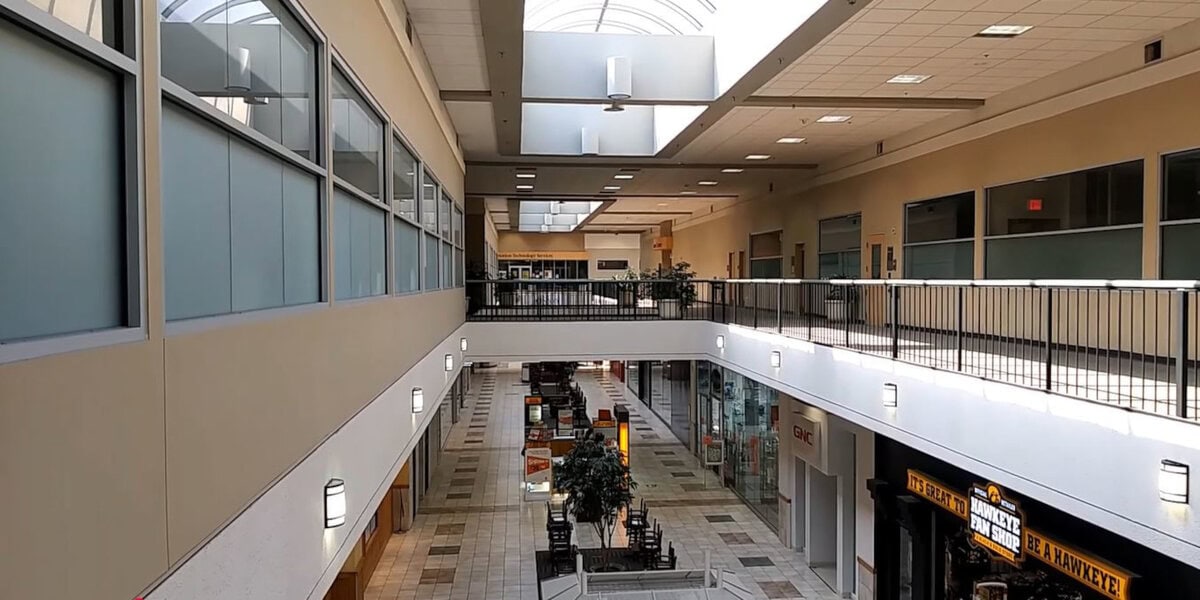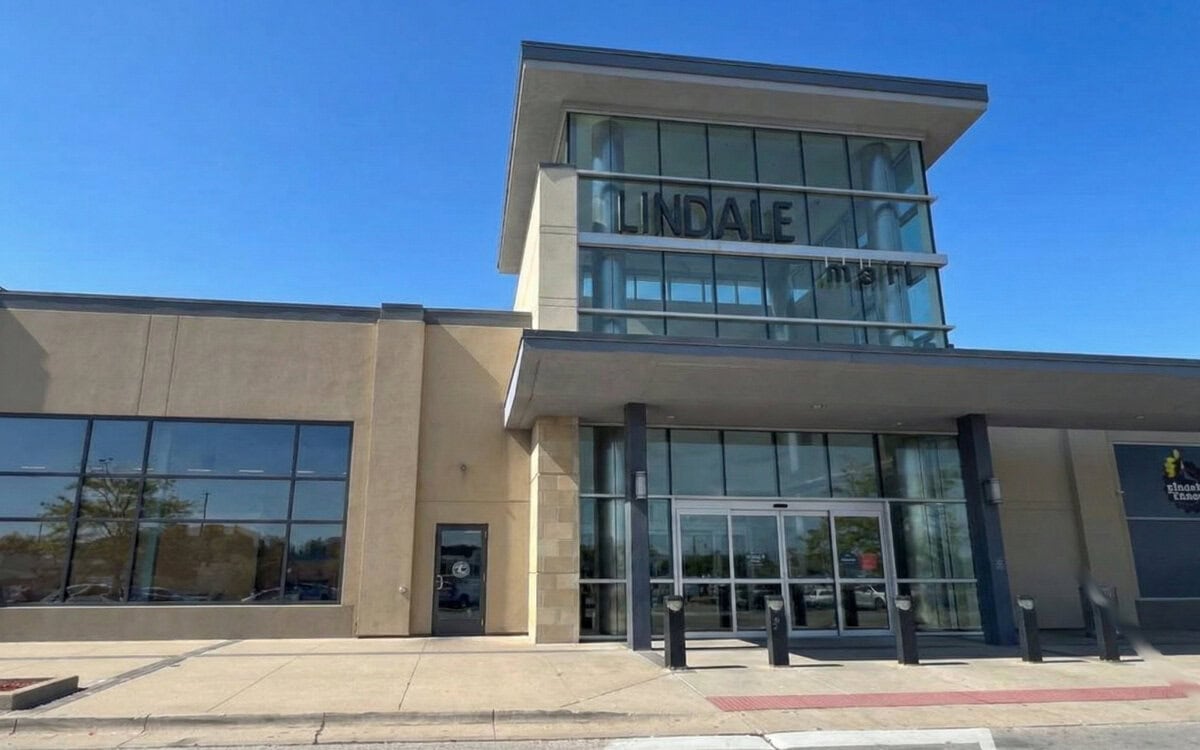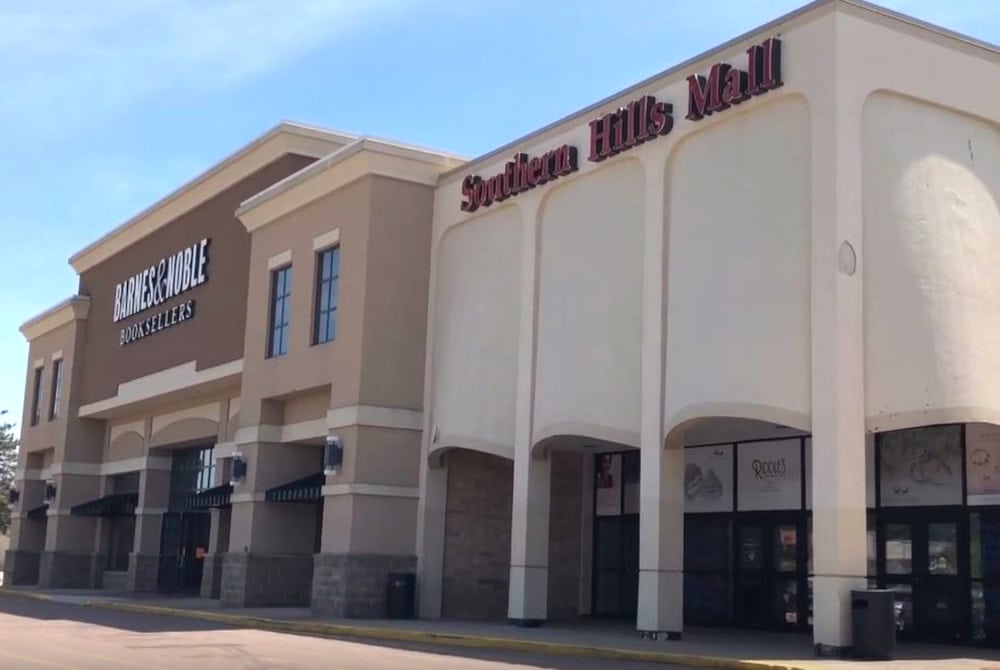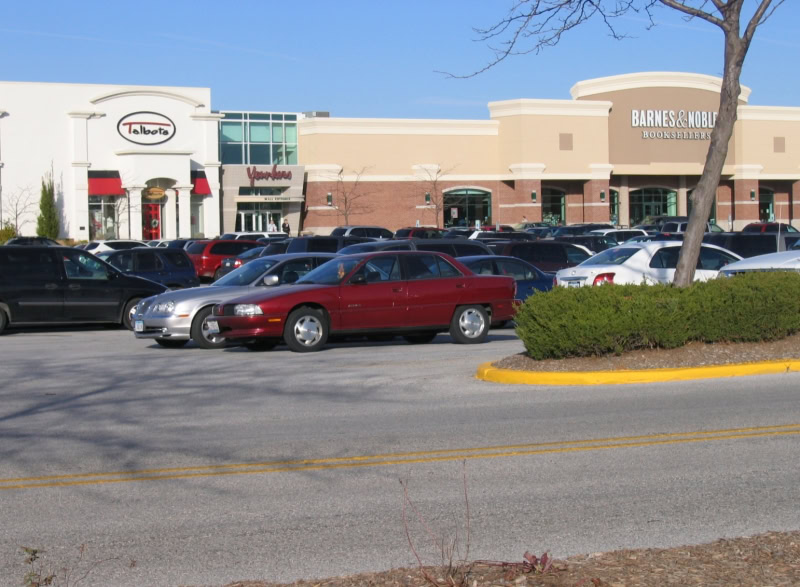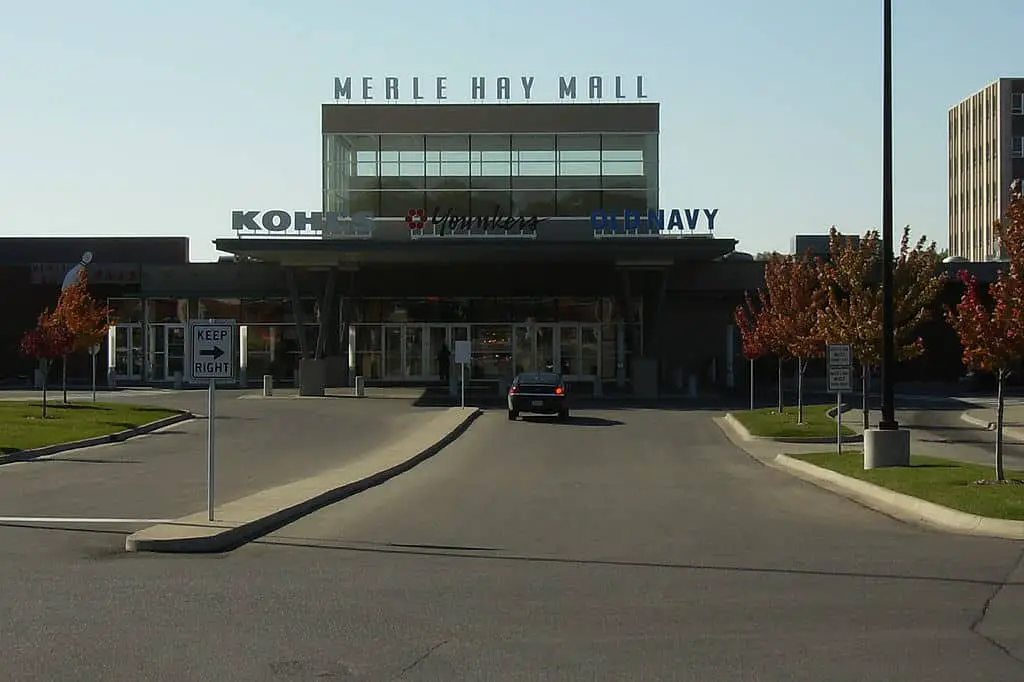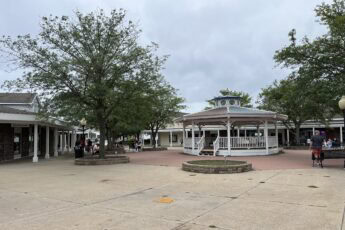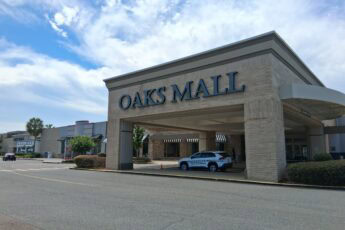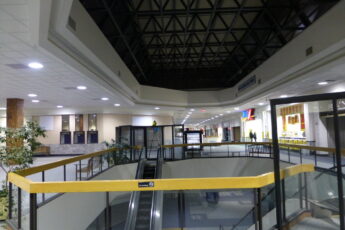Quincy Place Mall begins its story along North Quincy Avenue
Quincy Place Mall opened in Ottumwa, Iowa, in August 1990. Built on one level, the property spanned about 270,000 square feet and stood apart as a new regional retail center for southeast Iowa.
At the opening, three anchors framed the concourse: JCPenney, Herberger's, and Walmart. Shoppers left their cars in broad surface parking lots and entered directly into a hall lined with national specialty stores.
The launch redrew shopping patterns in Ottumwa.
Not long before, the pedestrian-only downtown mall had shuttered, leaving Quincy Avenue to take the lead, and at its center now stood Quincy Place Mall, a product of the enclosed-mall era.
Anchors gave it heft, while a mix of smaller tenants added breadth, creating the all-in-one destination families expected in those years.
Its timing also fits into a larger wave of Developers Diversified projects.
The firm invested in midwestern markets and brought a template of anchors, chains, and flexible parcels.
Ottumwa's entry matched that model. The roster at the start of the 90s was simple enough.
Department stores offered clothing and housewares, while the concourse added staples like jewelry, shoes, and gifts.
Walmart brought everyday goods, giving the mall steady traffic.
Expansion years and Walmart's exit
By the late 1990s, Quincy Place Mall was no longer new, and its owner began reinvesting.
Developers Diversified oversaw updates tied to redevelopment projects in 1999 and 2002.
These years kept the mall aligned with changing retail expectations, adjusting its layout and tenant mix.
One of the most visible changes came with Walmart.
The discount giant had been one of the three original anchors in 1990.
By 2003, the mall lost one of its anchors as Walmart relocated to a Supercenter on Venture Drive.
That exit wasn't unique.
Across the nation, retailers were trading mall corridors for freestanding stores with more acreage.
The loss of Walmart pushed the property into a quick adjustment.
Part of the empty anchor space was eventually taken over by Goody's, a discount fashion chain.
The move helped ease the sting, but the replacement never drew the kind of traffic Walmart once delivered.
Even with a Target nearby, built as a separate parcel on the same corridor, the absence of Walmart at the heart of the mall was clear.
The surrounding Quincy Avenue retail strip grew stronger, but inside the concourse, the challenge of balancing anchors set the tone for the next decade.

Ownership changes and mid-2010s closures
Quincy Place Mall shifted into new hands in 2012 when Quincy Place Holdings LLC became the owner and Lexington Realty International took over management.
The change brought a new direction for leasing and operations.
At that moment, the mall still held on to its original JCPenney and Herberger's anchors.
The former Walmart space had been partly reoccupied earlier by Dollar Tree and MC Sports.
These arrivals gave the concourse a new mix of value goods and sporting equipment.
By 2015, the big-box floorplate was filled again, at least in part, giving the mall a sense of continuity even as other centers struggled.
That stability did not last long.
MC Sports, a Michigan-based chain, liquidated in 2017, pulling out of Ottumwa along with every other market.
The same year, JCPenney announced a national round of closures, and the Ottumwa store was on the list.
The removal of that long-standing anchor marked the end of an era.
Two departures within months left the mall more vulnerable.
Smaller tenants remained, but the core weight of department store retail was slipping away.
Vacancy was again rising, and questions about how to repurpose large empty spaces became unavoidable.
Herberger's closes, and Dunham's arrives
In 2018, Herberger's joined the list of departing anchors.
The Bon-Ton chain closed after a nationwide liquidation, and its box at Quincy Place Mall was shuttered.
This loss left the concourse without two of its three original anchors in the span of a single year.
The impact was immediate.
Coverage noted that roughly two-thirds of the mall was empty, and longtime tenants were left surrounded by vacant storefronts.
The balance of the concourse tilted sharply toward non-fashion categories, and foot traffic dipped without large department stores drawing steady crowds.
That same summer, Dunham's Sports stepped in. The chain opened in August 2018 inside one of the large vacant boxes.
Its arrival marked a shift from apparel and housewares toward value-driven sporting goods, fitness, and outdoor gear.
It was not a replacement for Herberger's in the category, but it added a destination name back into the directory.
The move underscored the mall's transition into a property less defined by traditional department store retail.
Where once it had drawn customers for clothing and home goods, it now leaned more heavily on specialty anchors tied to recreation, discount, and hobbyist appeal.

Arcades, conventions, and new anchors
By 2019, Quincy Place Mall was attracting a different type of visitor.
Old School Pinball and Arcade opened inside, filling space with classic games and a niche draw.
Ottumwa also leaned into its reputation as a hub for gaming, with the Video Game Hall of Fame using the mall as a presence.
These additions gave the concourse a cultural identity beyond shopping.
Events reinforced the shift.
The Galaxies of Gaming convention took root in the mall's space, bringing in vendors, collectors, and players.
Instead of racks of fashion, the concourse was lined with rows of pinball machines, tournaments, and displays.
This change spoke to how the property was reimagining itself, adapting empty storefronts into entertainment and event venues.
In 2022, Harbor Freight Tools opened in the remaining part of the old Walmart box.
The hardware chain's arrival put practical goods on the directory and backfilled a large space that had been dormant for nearly two decades.
Alongside Dunham's Sports and Dollar Tree, it set a new tone: the anchors of Quincy Place Mall were no longer department stores but value and hobby destinations.
Festivals and carnivals in 2024
The mall remained active in 2024, not through retail expansion but through community events.
On September 7, the Viva Ottumwa International Festival was staged inside the mall.
Stalls and performances highlighted food, music, and traditions from local groups, with the concourse used as a gathering place.
It was a reminder that the property could serve as a civic space even when shops were quiet.
A month earlier, in August, KYOU reported that a carnival had been held at Quincy Place Mall during fair season.
The details in coverage were brief, with no exact date given, but the mention underlined that the site's large parking lots and enclosed hall remained useful for seasonal activities.
Rides and booths gave the space a temporary liveliness, quite different from its everyday pattern of traffic.
These uses showed the flexibility of the property.
Vacant anchors might have been dark, but common areas were repurposed into venues for events.
The mall's role in Ottumwa's public life was shifting steadily, and festivals or carnivals helped sustain its visibility while retail itself continued to shrink.
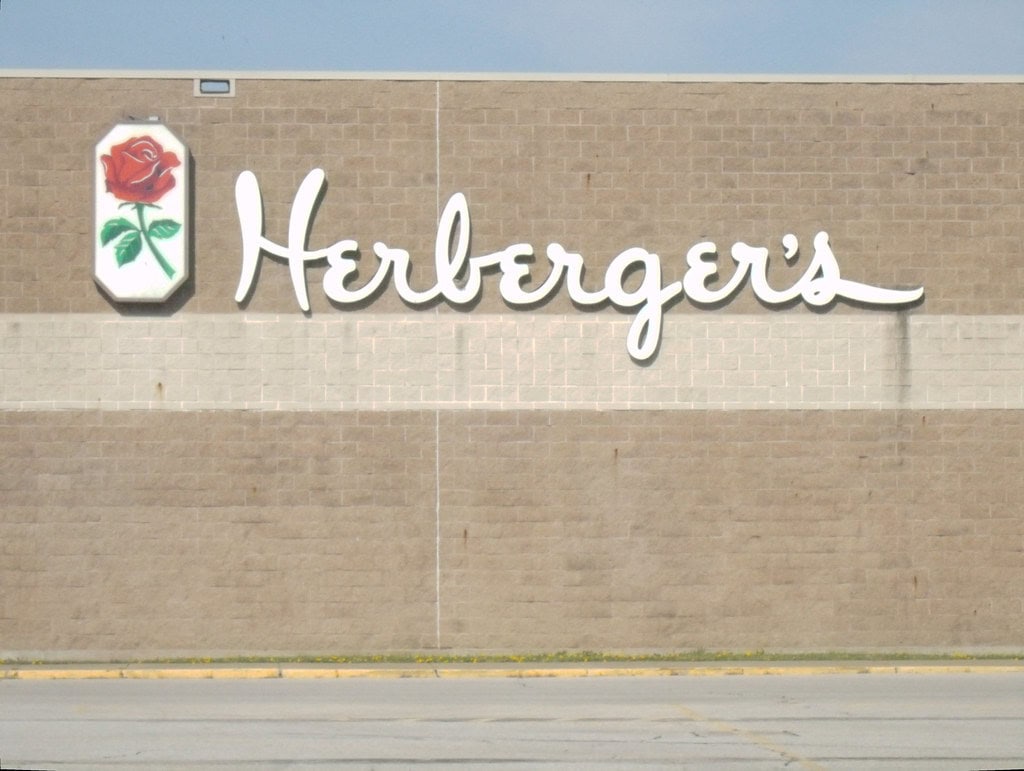
Notices, repairs, and 2025 enforcement
In 2025, the story of Quincy Place Mall shifted from events back to the building itself.
On May 20, the Ottumwa City Council directed the mall's owner, Quincy Place Holdings, to remove the old front sign and begin needed repairs.
A 30-day deadline was set, with a civil suit promised if work did not start.
The order put the property into the spotlight of city governance.
Officials required repairs to the exterior and removal of the dormant Herberger's sign, which had been in place since the anchor's 2018 closure.
For Ottumwa residents, the visible reminders of vacancies were hard to miss, and city intervention made clear that change was no longer optional.
The year showed the mall not only as a retail property but also as an issue of municipal oversight, tied to safety, appearance, and compliance with local codes.
